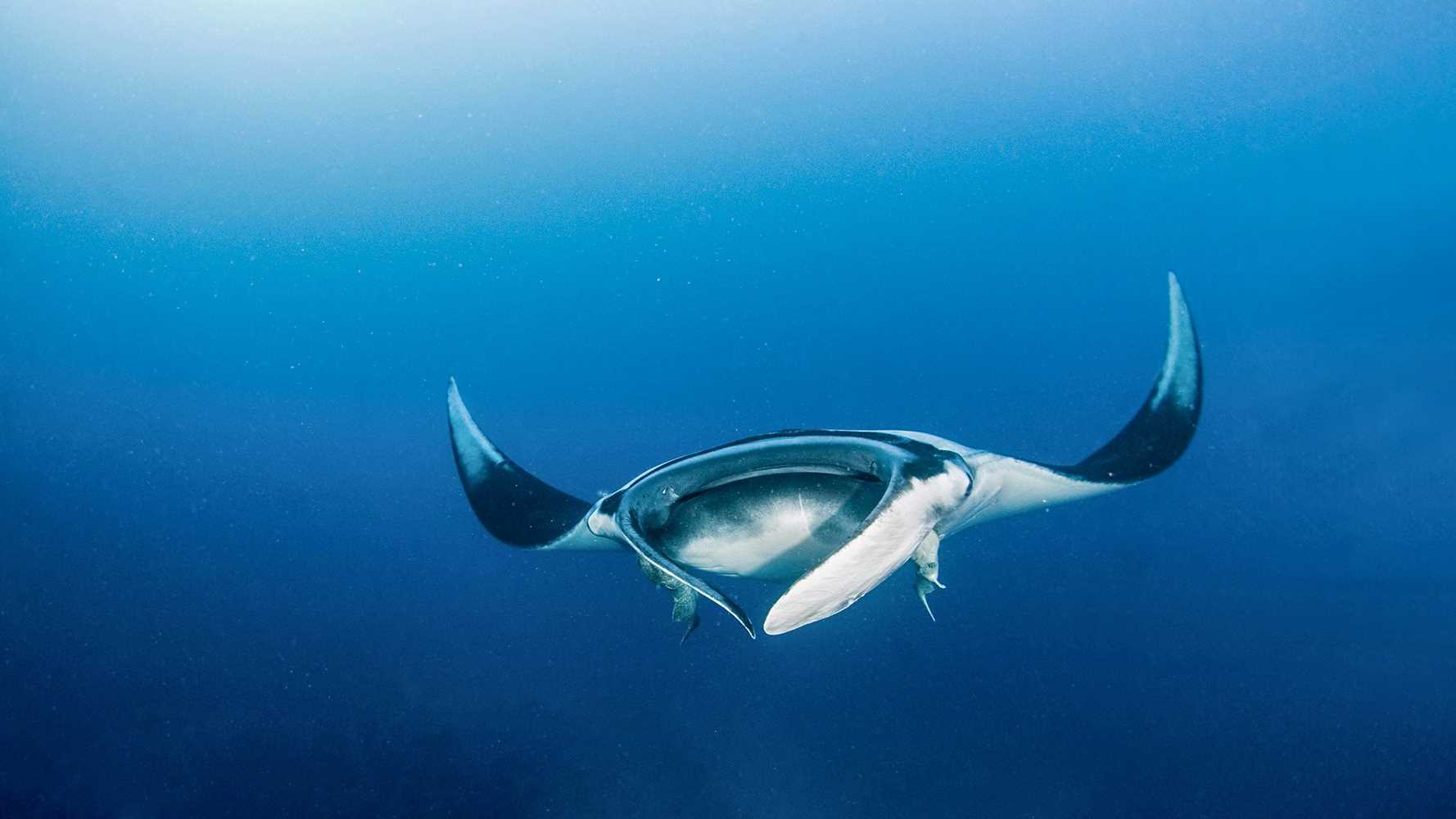One of a Kind
The dark spots on a manta ray’s white belly are unique to that individual—kind of like fingerprints. This helps researchers and citizen scientists alike identify and track individuals in the wild.

Order: Rajiformes
Family: Mobulidae
Genus: Mobula
Species: M. birostris
Range: Warmer waters of the Pacific, Indian, and Atlantic oceans, typically in shallow waters—where food is abundant—but also in the open ocean
Population: Worldwide population is unknown; subpopulations estimated between 100 to 1,000
How to spot them: Kite-shaped bodies typically dark on top and white with dark spots underneath; large, elongated pectoral fins
IUCN Red List Status: Vulnerable—at high risk of extinction in the wild
The Marquesas Islands are one of the few places where divers and snorkelers can see both the oceanic and reef species of manta rays. Their unique spot patterns can serve as data points to track the manta ray populations in this region.
Read more
With wingspans easily reaching more than 20 feet (up to 30 in rare cases), the gentle, giant manta ray is one of the ocean’s largest fish—and the smartest. These huge creatures have brains to match their size, with the biggest brain-to-body ratio of any fish. Believed to be highly intelligent, mantas have been known to display curiosity toward divers and attempt to interact with them. Studies show they may even be able to recognize themselves in a mirror—something very few species can do—and create mental maps of their surroundings. Get Inspired By Photos, Videos, Webinars, Stories, And Exclusive Offers. Sign Up
These graceful and efficient swimmers (they move around 9 miles per hour and can reach bursts of 22 mph) could easily migrate vast distances across the open ocean, but recent research has found that they often travel just a few hundred miles, remaining within specific subpopulations in regions like the South Pacific, Ecuador, and Bali. Rather than relocate long distances to follow a food source, the way most large ocean creatures do, giant mantas stay put and adjust their meals to what’s around them—zooplankton, large shrimp, even small fish. Their habitat and feeding grounds often overlap with that of their smaller relative: the more coastal reef manta ray, M. alfredi, whose wingspan reaches up to 18 feet.
Because these elusive fish are so difficult to study, scientists are still working to correctly classify them. Reef and giant mantas became separate species in 2009, and in 2017, DNA studies revealed they both belonged to the genus Mobula—and not in the separate genus Manta. As science advances, we’re sure to learn even more.
Scroll for more facts about this fascinating fish.